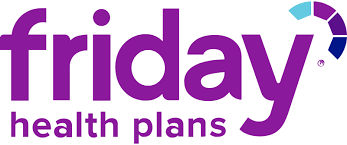Table of Contents
TL;DR:
- Sober living homes provide a structured, supportive environment for people recovering from addiction.
- They offer a substance-free space with rules and accountability to help residents transition to independent living.
- Benefits include: peer support, reduced triggers, life skills development, and continued treatment.
- Types of homes cater to different needs, including gender-specific options.
- Costs are covered through private pay, insurance (sometimes), or scholarships.
- Finding the right home involves research, considering your needs, and trusting your gut feeling.
Recovering from substance abuse can feel like a tough journey, but with the right support, it is achievable.
Many people are discovering that sober living homes are a great resource for bridging the gap between structured treatment and independent living.
In this article, we’ll break down what sober living homes are and highlight the many ways they help those dedicated to living addiction-free.
What is a Sober Living Home?
Sober living homes, also known as recovery residences, provide a structured and supportive place for individuals recovering from substance abuse. These homes create a safe environment where residents can focus on staying sober while gradually transitioning back to independent living.
Key features that set sober living homes apart from other treatment solutions include:
- Substance-Free Environment: The top priority is keeping the space completely drug- and alcohol-free. Residents are expected to stay sober at all times.
- Structured Living: These homes have clear rules, like curfews, assigned chores, and house meetings, to help build responsibility and accountability.
- Focus on Personal Growth: Sober living homes promote active recovery through therapy sessions and healthy activities that support a positive lifestyle.
Sober Living vs. Other Recovery Housing
While they have some similarities, sober living homes are different from other types of recovery housing:
Inpatient Rehab
Inpatient or residential rehab offers intensive, 24/7 medical and therapeutic care. Sober living homes, on the other hand, provide a more relaxed level of support for people who have completed rehab or are further along in their recovery journey.
Halfway Houses
Halfway houses often help individuals transitioning from incarceration. While some may include a focus on substance abuse recovery, they aren’t always specifically designed for that purpose.
The Benefits of Sober Home Living
Sober living homes provide countless benefits for individuals in recovery, offering a supportive space to grow and build a strong foundation for lasting sobriety. Here are some of the main advantages:
Peer Support
Living with others in recovery creates a sense of community. Sharing experiences, offering advice, and supporting each other makes the journey less lonely and more encouraging.
Reduced Triggers
Going back home after treatment can be tough if it’s full of temptations. Sober living homes provide a safe, trigger-free space so residents can stay focused on their recovery.
Life Skills Development
Addiction often disrupts everyday skills. Sober living gives residents a chance to rebuild things like budgeting, cooking, cleaning, and maintaining healthy relationships in a supportive environment.
Continued Treatment
Many sober homes encourage therapy, support groups, or 12-step meetings to keep the recovery going strong. This helps residents address deeper issues and learn healthy coping tools.
Types of Sober Living Homes
Sober living homes share the same core principles, but they can come in different types to cater to various needs and demographics. This flexibility allows people to find an environment that fits their unique situation, increasing their chances of a successful recovery.
Gender-specific sober living homes are especially popular because they help people avoid the distractions of romantic relationships, which can sometimes take the focus off recovery.
Sober Living Homes for Men
Sober living homes for men provide a space that addresses the unique challenges men face during recovery.
These homes often include programs and groups that focus on topics such as anger management, healthy masculinity, and developing positive coping skills.
By connecting with others who have shared similar experiences, men in these homes can build a sense of camaraderie and mutual understanding, fostering a supportive community.
Sober Living Homes for Women
For women, sober living homes offer a safe space to heal and rebuild their lives free from addiction.
These homes often incorporate specialized support addressing issues like trauma, self-esteem, and relationships. They create an empowering environment where women can connect, share their experiences, and support one another, building a strong sense of community and resilience.
There are also sober living homes tailored to specific age groups, professions, or individuals with co-occurring mental health conditions.
Choosing the right home can make a big difference by offering the customized support needed for a successful recovery journey.
Who Pays for Sober Living Homes?
There are several ways to cover the costs, making these supportive environments more accessible to a variety of people.
Private Pay
Many sober living homes operate on a private-pay basis, meaning residents or their families are responsible for covering the monthly rent and any additional fees.
Insurance Coverage
Health insurance usually doesn’t cover sober living homes since they’re not considered medical treatment.
That said, some plans might help with part of the costs if sober living is seen as an important part of a continuing care plan.
It’s always a good idea to check with your insurance provider to see what’s covered and if you need pre-authorization.
Scholarships and Sliding Scale Options
Some sober living homes offer scholarships or sliding scale fees based on income, making them more affordable for those with limited financial resources.
Finding the Right Sober Living Home
The right environment can play a big role in maintaining sobriety and building a fulfilling life. Here are some tips to help you choose:
Do Your Research
- Start Online: Look up sober living homes in your area and check reviews from past residents.
- Reach Out: Contact homes that catch your interest and ask about their program, rules, and expectations.
- Visit in Person: If possible, schedule a visit to check out the environment and meet the staff and residents.
Consider Your Needs
- Gender-Specific: Would you prefer a home for men or women?
- Specialized Programs: Do you need a home focused on co-occurring disorders or professional recovery?
- Location: Do you want to stay close to family, support networks, or work opportunities?
- Level of Structure: How much structure and support will help you in your recovery?
Trust Your Gut
Go with your instincts when visiting a sober living home. Does it feel safe and supportive? Do you connect with the staff and residents?
Pick a home where you feel comfortable and confident in your ability to thrive.
Ready to take the next step? Infinite Recovery in Austin, TX offers a supportive, structured sober living environment to help you succeed. With the right mix of accountability and community, we’re here to help you build a life free from addiction.
Reach out today to learn more about our sober living program and how we can support your journey to lasting sobriety.

















